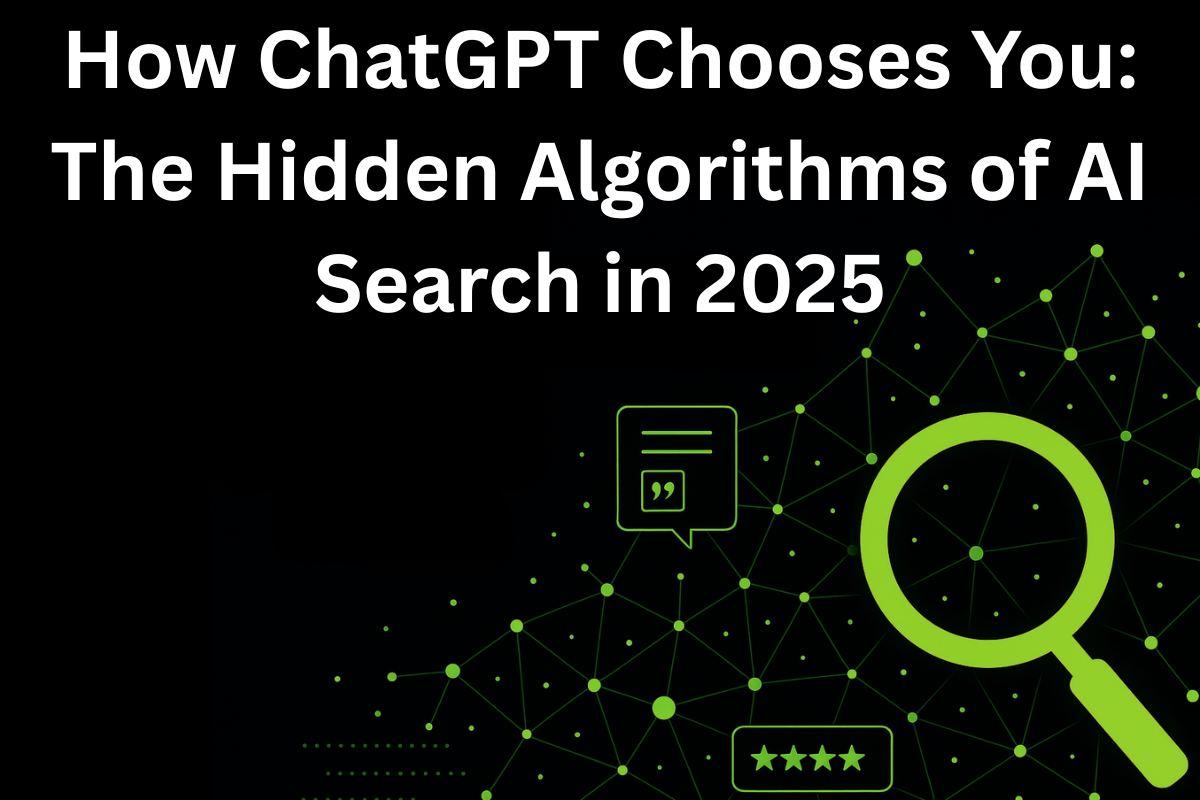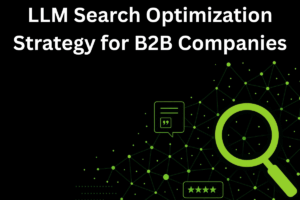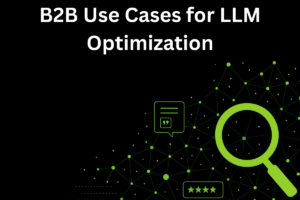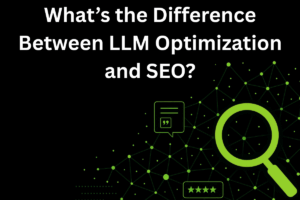TL;DR
Generative AI search tools like ChatGPT, Claude, Gemini, and Perplexity don’t just crawl keywords. They surface content that is semantically clear, well-structured, and authoritative. If your brand isn’t cited in these responses, you’re missing core AI Optimization (AIO) signals. This guide explains how AI tools decide who to recommend and how to make your brand consistently visible.
Why AI Search Visibility Decides B2B Winners
Today, 9 out of 10 B2B decision-makers use generative AI before visiting websites. Instead of Googling, they ask ChatGPT, Gemini, or Perplexity for vendor recommendations. If your brand doesn’t appear in these answers, you’re invisible to the modern buyer journey.
How ChatGPT and LLMs Choose What to Surface
Unlike Google’s web crawlers, large language models rely on four main input signals:
- Training Data Signals: Was your content included in the model’s training corpus?
- Real-Time Indexing & APIs: Does your site feed into AI indexes like Bing, Brave, or Perplexity?
- Semantic Formatting: Is your page structured with clear hierarchy, schema, and extractable answers?
- Authority Signals: Do trusted sites mention your brand consistently?
The 5 Core Signals That Make Content AI-Visible
1. Semantic Structure
AI relies on clarity. Well-formatted H2/H3 headings, bullet lists, bolded key phrases, and FAQs help AI segment and extract your content.
Action: Lead with a TL;DR, use topic-focused sections, and structure FAQs for snippet extraction.
2. Structured Metadata (Schema)
Schema markup provides AI with machine-readable context. FAQPage, Article, and Breadcrumb schema help AI tools verify accuracy.
Action: Apply JSON-LD schema for FAQ, Article, and Author. Tools like Schema.org’s Generator or RankMath simplify implementation.
3. Authority & Brand Presence
The more your brand is cited across LinkedIn, Medium, podcasts, and industry publications, the more trustworthy it becomes to AI.
Action: Expand digital footprint with third-party mentions, guest articles, and high-authority backlinks.
4. Answer Density
AI tools prefer direct, concise answers. When your blog anticipates questions, it becomes “snippet-ready.”
Action: Use Q&A-style subheadings with 1–2 paragraph direct answers.
5. Recency + Evergreen Referencability
Perplexity and ChatGPT prefer fresh data, while Claude and Gemini balance recency with evergreen trust signals.
Action: Refresh content quarterly, include updated statistics, and maintain URL stability.
FAQs About AI Search Visibility
Q: Why doesn’t my brand appear in ChatGPT or Claude?
A: Most often, it’s missing structured data, semantic clarity, or external authority signals that AI tools need to recommend you.
Q: How often should I update content for AI visibility?
A: At least once per quarter. Generative AI tools weigh recency heavily, so fresh statistics and updated schema improve ranking.
Q: What schema types matter most for AI optimization?
A: FAQPage, Article, Author, and Breadcrumb schema ensure content is machine-readable and snippet-ready.
________________________________________
About the Author
- Name: Dan Coll
- Role: Founder, AIVisible.ai
- Experience: 20+ years sales and marketing leadership roles
- Expertise: AI search optimization, B2B growth
- Social Proof: Clients using AI Visible have seen up to 3X discoverability improvements within 90 days
- Connect: LinkedIn
________________________________________
🚀 Want to Know Where You Stand?
Get a free AIVisible audit and discover why your content isn’t getting picked by AI tools like ChatGPT and how to fix it fast. Visit AIVisible at www.aivisible.ai




